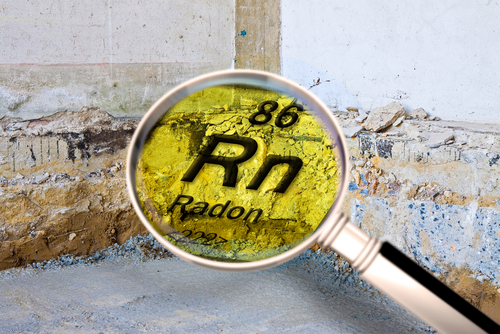Editor’s note: FM Perspectives are industry op-eds. The views expressed are the authors’ and do not necessarily reflect those of Facilities Management Advisor.
January is National Radon Action Month. Each year, about 21,000 people in the U.S. die as a result of exposure to high levels of radon gas. While these deaths include victims of all ages in all areas of the country, they have one thing in common: They are all easily avoidable.

Technology that can detect elevated radon levels, alerting potential victims to the danger, is reliable, affordable, and easily attainable. The deaths caused by radon occur because of an inexcusable gap between awareness and application.
A recent initiative involving the Biden administration and the U.S. Environmental Protection Agency (EPA) seeks to close that gap. The program is part of the EPA’s Environmental Justice Collaborative Problem Solving Cooperative Agreement Program—which was established to provide financial support to projects addressing local health concerns—and provides $1 million to the North Dakota Department of Environmental Quality to fund a radon awareness, testing, and mitigation project.
While the program focuses on reducing the impact in low-income residential communities, it has the potential to inspire much-needed improvements in radon response measures in commercial and industrial spaces. Laws aimed at addressing the dangers of radon have been in place for decades, beginning with the Toxic Substances Control Act (TSCA) passed in 1976. What has been missing from the government’s efforts to reduce needless radon-related deaths is financial support and incentives.
Understanding the Radon Threat
Radon is a colorless, odorless, and tasteless radioactive gas that occurs naturally as uranium breaks down. As it is released from water, soil, and rocks, most radon makes its way into the atmosphere where it is diluted to harmless levels.
However, radon gas can also make its way into residential, commercial, and industrial buildings through cracks and other holes in foundations. If it is permitted to accumulate within structures, it can lead to elevated indoor levels that pose serious health dangers, such as lung cancer.
Radon impacts the human body by directly attacking lung tissue. Airborne alpha radiation in radon disrupts chemical bonds in cells, leading to genetic damage and, if not addressed, lung cancer. It is estimated that between 3% and 14% of all cases of lung cancer are caused by radon exposure, making it the second leading cause of the disease.
The latest radon detection technology utilizes pulse-counting ionization chambers to measure the amount of radon in the air. Radon monitors can provide initial readings in as little as 10 minutes, providing an early warning of the potential hazard. Within 10 hours, radon monitors can provide readings that are more than 90% accurate.
Monitors that provide ongoing readings are valuable because many factors can cause fluctuations in radon levels. For example, seasonal weather changes can impact the amount of radon in the indoor air, and the performance of heating, cooling, and ventilation systems can impact the amount of radon and other soil gasses that are drawn from the soil or the degree of dilution achieved once it accumulates. Together, early radon detection and ongoing monitoring can be life-saving.
Taking Steps to Improve the Radon Response
The recent EPA-funded initiative in North Dakota is a huge step in the right direction when it comes to closing the gap between awareness and application. It empowers those who understand the dangers of radon to educate others and encourage needed mitigation.
Tax credits are another tool for providing financial support that could be applied to the radon issue. A radon tax credit or subsidy program could incentivize testing and mitigation in commercial and industrial facilities, contributing to the cost of testing or mitigation systems when they are deemed necessary.
Government agencies could also boost the use of radon monitoring technology by creating incentives in the permitted processes applied to commercial and industrial construction. This could include expedited permitting, reduced fees, and other incentives extended to projects that implement approved radon control systems.
Providing government-sponsored radon training programs for those involved in the development, management, and maintenance of commercial and industrial facilities could also increase radon awareness and inspire steps to reduce its impact. The programs could target engineers, architects, builders, HVAC professionals, and building management professionals.
Federal and state legislation makes it clear that radon poses a significant threat to human life, illustrated by the TSCA’s requirement that federal buildings conduct studies to determine the extent of radon accumulation. Now is the time to expand government efforts in a way that empowers all U.S. citizens to detect and avoid the deadly effects of radon exposure. Increasing efforts to provide financial support and incentives holds the promise to accomplish that goal.
For more resources on radon risks and mitigation, visit the EPA’s site here.
Insoo Park is founder and CEO of Ecosense, a provider of radon detection and monitoring solutions for homes and businesses.

